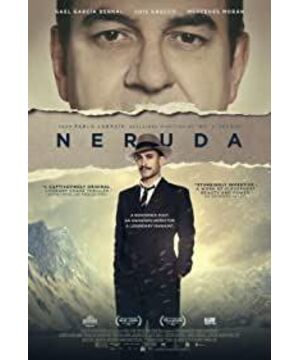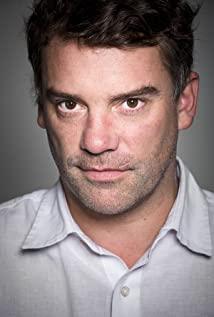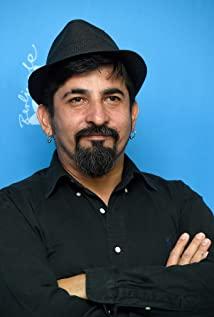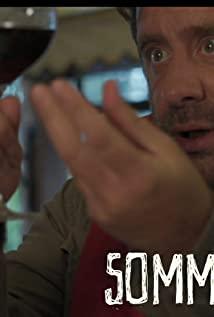If Wong Kar -wai was asked to adapt and shoot Lawrence Bullock's detective novel , it would probably look like this "Chasing Neruda" , and even think that Gael García Bernal looks like a certain angle in the film. Very Liang Chaowei. Pablo Laraine turned to biography after winning the prize in Berlin for "The Club of the Priests". In 2016, he released two works, "The Hunt for Neruda" and "The First Lady", which were successively shortlisted in Cannes. "Director's Fortnight" and Venice Competition. Both films received unexpectedly positive reviews, with the former representing Chile competing for the Best Foreign Language Film Oscar, and the latter winning Natalie Portman an Oscar nomination for Best Actress.
Although they are both described with famous historical figures, these two films are not traditional biopics, but type mutations under stylized and experimental narratives, creating new forms of expression for future biographical themes. This "Chasing Neruda" has a similar confusing documentary/fictional feel to "Chile Say No," which was also shortlisted in 2012's "Directors' Fortnight" at Cannes , except that there are no longer historical archives or news clips embedded here, and It is a fusion of the real details of the characters and the fictional plot, making it difficult for the audience to distinguish its blurred boundaries.
On the surface, the film seems to have the pattern of a black crime genre film , telling the story of the famous Chilean poet Neruda who joined the Communist Party in the 1950s, was persecuted and wanted by the government, and then embarked on a road to escape. The film begins to fall into the atmosphere of a crime-hunting type film shortly after the opening. Neruda is informed of the government's wanted news, introduces the appearance of the police protagonist, and goes to Neruda's house to search. However, this suspenseful and tense atmosphere is gradually diminished by a magical and blurred poetry.
The key to the resolution of this crime suspense genre is to use the police's voice-over narration to make the audience think that this is a cat-and-mouse game where the pursuer is sure of the fugitive. But in fact, every time the police arrive at the scene, they are in vain. They are even more fascinated by a novel that Neruda deliberately left behind, and can't help but fall into the fictional world of the poet. At the same time, Neruda’s inner monologue emerges from time to time in the narrative from the police’s perspective. The pursuer thinks that he is the protagonist and is in control of the pursuit, but he does not know that he has become the supporting role of the fugitive. This radically reversed relationship between pursuer and fugitive keeps the authenticity of the hunt eroded , replaced by romanticized detail and poetic plot. Like Neruda singing and dancing with transgender prostitutes in a brothel, and being followed by the police while boarding a ship in a port city, it all makes the story seem like a fictional experience written by the poet.
Pablo Laraine's preferred backlighting and filters, photography that revolves around characters, and jump cuts during dialogue have been tried before in "Chile Says No" and "The Priest Club", this time in the work It also continues unchanged, reflecting his unity and control of aesthetic style. This time, it is even more brilliant to create a sense of rhythm through editing , which makes the plot leisurely wander between the two characters of the police and the poet, but it is no longer a desperate pursuit of life and death, but more like the reader's admiration and pursuit of the writer .
In the climax of the snowy mountain scene, the relationship between the pursuer and the fugitive has disappeared on a realistic level. The policeman's hatred for the poet gradually turned into a fascination with the poet and his works; the poet's original disdain for the police also changed. As affectionate as he treats his fictional characters, and eventually calls out the name of his pursuer, making him no longer a supporting role. In the two worlds of reality and fiction, the relationship between the two is actually reversible. This kind of Zhuang Zhou dream butterfly design is quite amazing, once again enhancing the poetic space of the work, and maintaining a seamless fit with the theme.
View more about Neruda reviews











